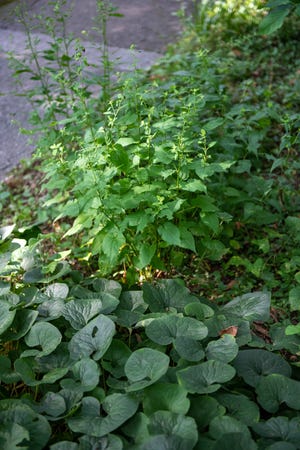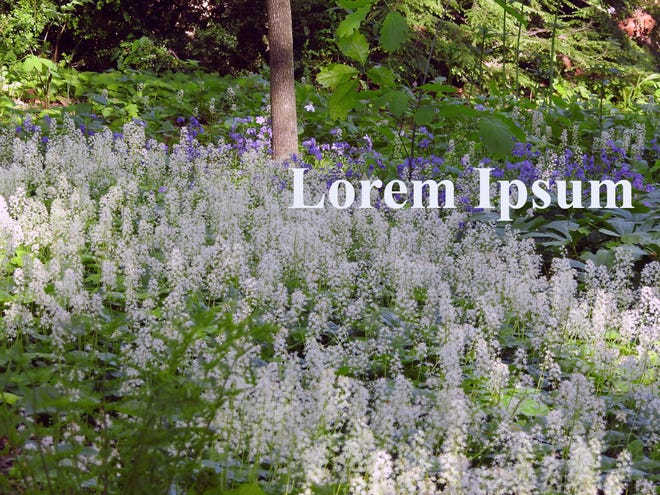Artificial turf as a residential replacement for grass is a worrying trend.
Reports from the UK to Malaysia to here in the United States reveal this practice is stirring up criticism globally.
Artificial turf seems like a solution to easily keep up with the expectation of a solid green expanse around the home. An increasing number of homeowners are buying into this idea, with the artificial turf market growing 15% since 2017 and residential properties being identified as the biggest area of opportunity, according to a 2020 report from the Synthetic Turf Council.
In truth, fake lawns require upkeep and replacement. A 2021 Wirecutter report estimated artificial turf costs up to $10 per square foot to install, with total costs in the thousands, and likely needs to be replaced every eight to 10 years.
Fake lawns cause harm on the ecological, individual, and community levels. Ecologically, fake lawns provide nowhere for anything to live. A study at Columbia University recorded temperatures on artificial grass up to 60 degrees hotter than living grass, getting hot enough to burn skin during prolonged exposure.
Luckily, you have good options to not only buck the artificial turf trend, but also support nature at the same time.
Flower power:Take a walk in the Delaware Botanic Gardens to discover natural beauties in Sussex County
Your first option is one to start today: change how you manage existing living turfgrass.
Many homeowners need turfgrass space for specific reasons. Children and pets need places to play after all! For your turf, use sustainable management practices such as those recommended in the Northeast Organic Farming Association’s Organic Land Care Principles. Don’t use synthetic fertilizers, which build up as salts in your soil. Do mow your grass at 3 inches or taller to promote deeper roots that trap more water, minimizing irrigation needs. There are even native grass options like sedges you can use to replace traditional turfgrasses.
These sustainable practices eliminate potential negative effects of traditionally managed turfgrass — a great place to start! However, they alone can’t make turfgrass lawn a biologically productive ecosystem.

University of Delaware professor and Co-founder of Homegrown National Park Doug Tallamy notes that turfgrass lawns can’t support food webs and are disconnected from their larger natural system. So once you’re managing sustainably, reduce your turf space to the minimum amount you truly need.
When reducing turfgrass, replace it with alternative “lawns” of native ground covers. “Ground cover” typically refers to a plant that grows low and spreads to effectively cover large areas.
According to University of Delaware Cooperative Extension, ground covers help stabilize the soil and improve its texture, retain and use water effectively, and lower soil temperature through shading, among many other benefits. They provide nectar for bumblebees, are the food source of caterpillars which become butterflies, create seeds for birds, and form habitat that houses numerous animals.
More:Longwood Gardens travel guide: What you need to know if you go
The last, but not least, reason to adopt native ground covers: once established, they typically require less physical work and fewer other inputs from you!
By now you are of course convinced to grow alternative ground covers. But how do you find out what to grow?
Luckily there’s advice available from your state extension agency, nearby native plant nurseries, and your local public gardens, which you can look up through the American Public Gardens Association.
Here in Southeastern Pennsylvania, where Longwood Gardens is located, wild strawberry (scientific name Fragaria virginiana), green-and-gold (Chrysogonum virginianum), and golden groundsel (Packera aurea) are wonderful in full sun.

In the shade, foamflower (Tiarella cordifolia), wild ginger (Asarum canadense), and large-leaf aster (Eurybia macrophylla) grow beautifully lush where traditional turfgrass often struggles to grow. Create even more beauty by sustainably growing other native plants within your new ground cover following principles from the Ecological Landscape Alliance.
Keep in mind that ripping out and replacing a lawn is a process. It takes time, planning, and work. You will try things. You will succeed at some and fail at others. I know I have. That’s the fun of it!
Over time your yard will transform into a beautiful, sustainable, and supportive extension of nature.
Ryan Gott, Ph.D., is an entomologist and Fellow in the Longwood Gardens Fellows Program. He comes to Longwood from Pittsburgh, Pennsylvania, where he was working as an Integrated Pest Management specialist in in the medical Cannabis industry. Prior to that role he was the Associate Director of IPM at Phipps Conservatory and Botanical Gardens in Pittsburgh. Gott is an enthusiastic advocate for sustainable landscaping and has a particular interest in Eastern North American native plants. He received his bachelor’s degree in biology from Purdue University and his doctoral degree in entomology from the University of Maryland.
More from Open Call
More:Open Call: Arts & cultural groups, we want to hear from you
More:Open Call: Delaware Institute for the Arts in Education marks 40 years of service
More:Open Call: City Theater Company’s new season tells a story Wilmington wants to hear